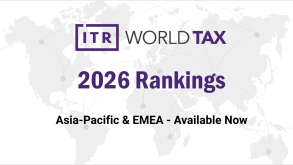Historically, transfer pricing (TP) advisors have relied upon information gathered from external sources to conduct analyses when applying profitability methods. Since these methods provide accurate TP analysis as more information becomes available, database providers have also relied on technological advances to obtain information swiftly and efficiently on companies and transactions performed by independent third parties.
Industry classification codes used in TP practice have not been updated as market and economic conditions have evolved. Such is the case with the standard industrial codes issued by the US Department of Labour, which were created in 1930 and replaced by the North American Industry Classification System in 1997; that is, for 25 years these codes have not been reviewed or improved by TP practitioners for accurate data searches.
This becomes relevant because robust information can be obtained through artificial intelligence and used to reach more precise results.
The value of data mining
Data mining has been constantly evolving and has become relevant for database providers and TP practitioners, as they seek to generate increasingly robust information for users via technological progress.
This affects not only searches for comparable companies through specific texts, but also information from private companies (mainly in Europe) that can now have a deeper context. Because of these developments, the use of profitability methods in TP has evolved, and will continue to do so, by having more elements for its application.
This is because database providers can exploit the text of the annual reports of public companies to extract the information that could be useful to their users. This is achieved through internal interfaces in the databases and Boolean searches that work by combining concepts between one or more words to limit, broaden and define the search criteria.
In addition to industry codes, the main keywords used in searches for comparable companies are:
Functions: identifying the main activities of public companies through concepts, whether they relate to manufacturing, distribution, marketing, services, etc.
Assets: the main resources held by companies whether they are tangible or intangible assets.
Risks: in the annual reports submitted to regulatory entities, the obliged entities disclose the main risks faced in the reporting period, as well as potential future contingencies.
Geographical regions: including the main zones or locations where the company operates.
Segmented financial information: relevant for TP analysis as it shows the results by divisions, types of product or regions around the world.
This keyword search is not limited to the search of comparable companies. It is also possible to obtain agreements between independent third parties, whether for services, licensing of intangibles or financing.
This is because providers can identify the contents of the clauses of the agreements signed on the market. Similarly, some of the terms that can be used to search for comparable contracts are:
Signature and term dates: to define the period in which the transactions remained in force, as well as modifications to the conclusion date;
Involved parties: includes the business names of the signing entities, as well as some others that could be affected as part of the contract (e.g. guarantees);
Geographical scope: as in previous paragraphs, it defines the regions where the transactions are carried out;
Intangible or service of the contract: the agreement’s object discloses if the parties agreed on a service to be provided, granted financing, etc.;
Compensation basis: this data is crucial as there are different ways in which the compensation can be agreed (sales, costs, expenses, assets, profits, etc.);
Exclusivity: determines whether the agreements to be analysed include exclusivity clauses between the parties; and
Relationship: data mining can determine whether the agreement includes related parties.
Intercompany analyses
Given the progress in artificial intelligence for data mining – by generating accurate and robust information on comparable transactions or companies – the TP practices in emerging markets have the possibility to conduct intercompany analyses. These increasingly meet the comparability criteria stated in the OECD TP Guidelines when considering the economic and business circumstances applicable to the reality of each case.
Finally, it is important to keep in mind the specific and high technical requirements set by tax authorities. In particular, the use of the deductive approach foreseen in the OECD TP Guidelines when preparing searches of comparable transactions or companies based on keywords should be emphasised. This states that the comparable companies or transactions search procedure generally starts with a wide spectrum of potential comparables, to be refined through quantitative and qualitative criteria.
The artificial intelligence meets these statements by eliminating biases, starting from a broad base of potential comparables, and making the search processes transparent and accurate. It considers not only in general terms the functions, assets and risks, but the specific economic and business circumstances to increase the comparability criteria.
Dan Paul Hernández de Aguirre
Leader, HLB MAAT Asesores
Oscar Antonio Salinas López
Manager, HLB MAAT Asesores













